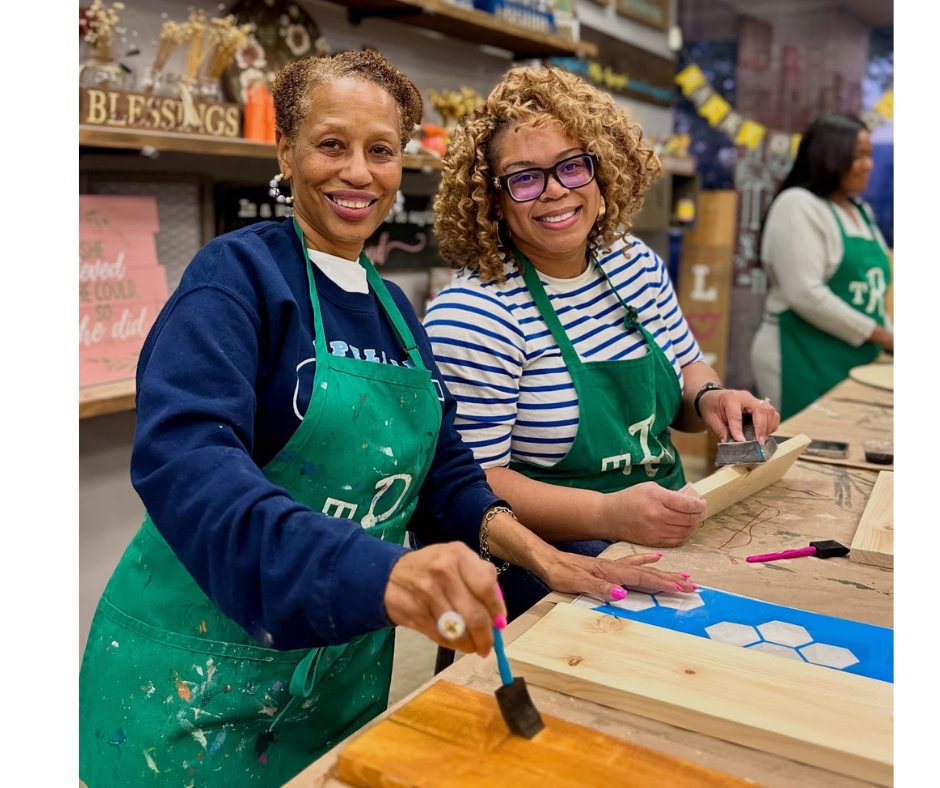The Healing Power of Art: How Painting Can Improve Mental Health

In a fast-paced world where stress, anxiety, and burnout have become common, many are turning to creative outlets for relief and healing. One such outlet—often overlooked but deeply therapeutic—is painting. Whether you’re a seasoned artist or someone who hasn’t picked up a brush since grade school, the act of painting can offer powerful mental health benefits. Here’s how engaging with a canvas or wood project can improve your emotional and psychological well-being.
1. Painting Reduces Stress and Anxiety
When you paint, your mind shifts focus away from daily worries and into the present moment. This state of flow—a concept introduced by psychologist Mihaly Csikszentmihalyi—allows you to lose yourself in the process of creating, which can lower cortisol levels and reduce feelings of anxiety. The repetitive motion of brushstrokes and the focus on colors and shapes act almost like meditation, calming the nervous system.
2. It Provides an Emotional Outlet
Not everyone finds it easy to express how they feel using words. Painting offers a safe space to release emotions—joy, grief, anger, love—that might otherwise stay bottled up. Even abstract art can reveal inner truths, helping you process experiences that are difficult to articulate. Over time, painting can become a visual diary of your emotional journey.
3. Boosts Self-Esteem and Confidence
There’s something deeply empowering about creating something from nothing. Each completed piece can give you a sense of accomplishment and pride, which helps boost self-esteem. And unlike in other areas of life, there are no mistakes in painting—only new directions. This forgiving nature of art encourages experimentation and self-acceptance.

4. Encourages Mindfulness and Focus
Painting requires concentration. Choosing colors, planning a composition, or simply following your intuition as you create forces your brain to stay in the moment. This kind of mindfulness practice is linked to reduced depression, improved emotional regulation, and greater mental clarity.

5. Promotes Social Connection (When You Want It)
While painting is often a solitary activity, it doesn’t have to be. Joining a local art class, attending a paint-and-sip event, or even sharing your work on social media can create a sense of connection and community. In turn, feeling connected can protect against feelings of loneliness and isolation—major contributors to mental health challenges. The Rustic Brush is a DIY painting workshop that offers workshops to help you create a masterpiece and memories with friends.

6. It’s Accessible and Non-Judgmental
You don’t need to be the next Picasso to reap the benefits of painting. Art therapy isn’t about the final product—it’s about the process. Whether you paint with watercolors, acrylics, or finger paints, what matters most is your personal engagement with the activity. There’s no “right” way to paint, and that in itself can be incredibly liberating.
Final Thoughts
Painting is more than just a creative hobby—it’s a mental wellness tool that anyone can access. You don’t need expensive materials or formal training. All you need is a willingness to explore, express, and engage with your inner world through color and form.
So, the next time you’re feeling overwhelmed or emotionally stuck, try picking up a brush. You might just find healing in every stroke.